Depending on which model you choose, the Surface Pro 9 is either a highly capable laptop/tablet hybrid built for the home or office, or a long-lasting 5G machine designed to get work done just about anywhere. I spent the better part of a week testing the latter version, and found that its always-on connectivity and excellent battery life comes with some serious sacrifices.
No matter which Surface Pro 9 you buy, you’ll be treated to an updated version of our favorite 2-in-1 laptop, sporting a great display, versatile design and a superb keyboard and stylus experience for those willing to splurge on accessories. But not all flavors of this flexible notebook are created equal, and you may be seriously let down if you choose the wrong one.
A great Windows 2-in-1 (if configured properly)
The Surface Pro 9 is a great Windows 2-in-1 laptop for working, streaming and sketching, and a good upgrade for folks coming from a Pro 7 or older. Unless you absolutely need cellular connectivity, skip the 5G model in favor of the cheaper Intel versions.
A tried and true design (now with colors!)
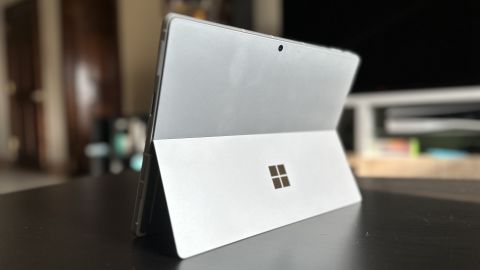
The Surface Pro 9 sticks to the same reliable design that made last year’s model our favorite 2-in-1 laptop. Its aluminum body feels sturdy yet lightweight, its flexible kickstand allows it to morph from a laptop to a nearly-flat drawing canvas in an instant, and for the first time, the tablet comes in a few fun colors. I won’t lie: I was bummed that my review unit came in the same old silver, because the new Sapphire blue and Forest green options look gorgeous in photos (the Graphite option is also back, if you prefer something darker). Considering that the new iPad Pros are still limited to shades of silver, I’m pleased to see the Surface Pro 9 offer a few options with more pop. I’m also just a sucker for blue.
I also like that the new Surface colors are complemented by a matching array of optional Signature Keyboards ($180 alone; $280 with a Slim Pen 2), so you can mix and match or create a clean, uniform look. And if you’re upgrading, most older Surface Pro keyboards will still work too.
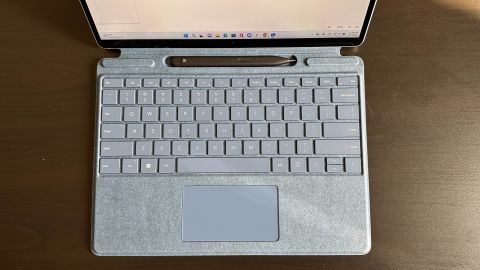
Microsoft’s detachable keyboard — which connects to the Surface with a simple, satisfying magnetic snap — still feels great as ever, with bouncy keys and a soft-touch Alcantara coating that kept my wrists comfy throughout long hours of typing. I also appreciate that the keyboard packs a small nook up top for the Surface Slim Pen 2. Not only does this charge the stylus and keep it neatly out of sight when you don’t need it, but it’s also a more secure solution than magnetically hanging the pen on the side, like on the iPad Pro.
A great display and pen experience
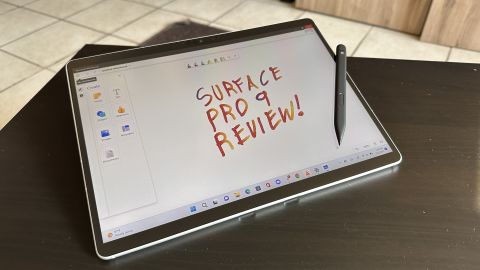
The Surface Pro 9’s display is the same as last year’s model, which is to say it’s excellent. I love the way my mouse cursor smoothly glides around the screen thanks to that zippy 120Hz refresh rate, and the many hours of sports and YouTube videos I watched on the device looked colorful and crisp. The Pro 9’s top and bottom display borders are still a little chunkier than I’d like (especially coming from the near-seamless iPad Pro), but it still packs an excellent screen — and one that really comes to life when you put a pen to it.
I tested the Pro 9 with a $129 Surface Slim Pen 2, which offered the best stylus experience I’ve had on a tablet. Microsoft’s premium pen packs advanced haptics inside, which do a good job simulating the tactile feel of whatever virtual tool you’re using — be it a pencil or a paintbrush. I’m no artist, but doodling on Microsoft’s 13-inch slate felt great, and a lot more satisfying than the more static experiences you get with an Apple Pencil on an iPad or an S Pen on a Galaxy Tab. I also appreciate that the Slim Pen 2 has physical programmable buttons on the front and rear, which I found more reliable than the tap-based controls on the $129 Apple Pencil 2 for doing things like changing tools and undoing actions.
Samsung’s S Pen (which comes included on the Galaxy Tab S8 series) gets points for its extra features — like the ability to translate text by simply hovering over it — but in terms of taking notes and drawing on a digital screen, nothing feels better than Microsoft’s stylus.
Amazing battery life and a good-enough webcam
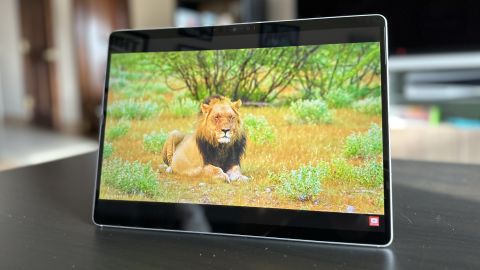
While the 5G-based Surface Pro 9 I tested doesn’t offer the best performance (more on that later), it makes up for it with some truly excellent battery life. Microsoft’s 2-in-1 endured a whopping 11 hours and 43 minutes of 4K video playback on our battery test, beating top Windows laptops like the Dell XPS 13 (8:31) while nearly doubling what we got from the new iPad Pro M2 (6:10). This device will last you all day on the road, and that’s an ideal feature for a 5G-enabled laptop designed to let you work from anywhere. We haven’t tested the Intel-based version of the Pro 9, but based on our experience with similar machines, you should expect battery life to take a hit if you opt for the more powerful processor.

The Surface Pro 9’s 1080p webcam is just fine, producing crisp selfies that were on par with the Dell XPS 13 and a little less clear than the MacBook Air M2. It got me through routine video calls without issue, and its integrated Windows Hello functionality allowed me to easily log into my machine with a quick face scan. The Pro 9’s rear-facing 10-megapixel camera is relatively blurry and dull compared to the average smartphone, but I’m not sure how many people are running around taking photos with a 13-inch tablet in their hands.
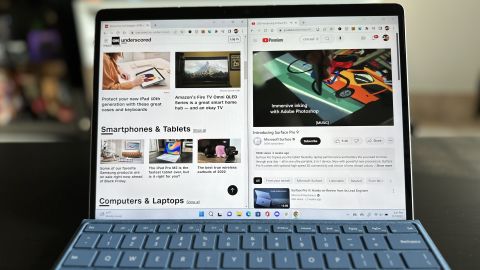
The Surface Pro 9 comes in two flavors: One powered by an Intel processor that delivers the type of performance you’d expect from a mainstream laptop, and another with Microsoft’s SQ3 chip, which trades sheer speed for cellular 5G capabilities that let you get online anywhere — even without Wi-Fi. I tested the latter model, and the sacrifices you make for constant connectivity were immediately apparent.
My SQ3-powered Surface Pro 9 unit felt slow right out of the box, as even basic actions like entering text in Slack or sorting through emails occasionally seemed frustratingly sluggish. I wouldn’t call this version of the Pro 9 completely unusable — my daily split-screen multitasking worked smoothly — but I expect far better performance from a machine that starts at $1,300.
These underwhelming speeds were backed up by our benchmark tests, where Microsoft’s 2-in-1 consistently fell behind the competition. On the Geekbench 5 single-core test (which is a good gauge of a laptop’s basic productivity chops), the Pro 9’s relatively low score of 1,122 was about 22% lower than our Intel Core i5-powered Dell XPS 13, and a whopping 40% slower than the blazing performance we got out of the M2-powered (and similarly priced) MacBook Air and iPad Pro. Even last year’s Surface Pro 8, which we tested with a previous-gen Intel Core i7 processor, was faster than the Pro 9 on single-core tests. Our Surface Pro 9 model couldn’t even run the graphics portion of Geekbench 5, so don’t expect to do much light gaming (unless you’re streaming from the cloud) or video editing.
The Surface Pro 9 5G’s battery life is fantastic, but if you can live with a little less endurance and no cellular connectivity, I’d strongly recommend getting an Intel-based model.
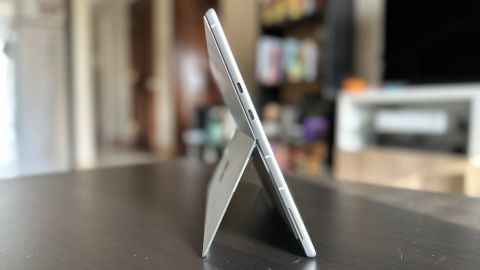
If you own a Surface Pro 8, there’s no reason to upgrade this year. This is virtually the same device Microsoft released in 2021, just with a new choice of processors, some new color options, and even fewer ports than the previous model. While the Pro 9 still sports the same two USB-C Thunderbolt 4 ports and proprietary Surface Connect charging port, it also ditches the headphone jack — forcing you to either rely on Bluetooth headphones or pick up a USB-C to 3.5mm adapter. While that trend is becoming common amongst mainstream tablets and laptops, you still get a headphone jack on the latest MacBooks, and Dell at least throws in a free adapter with the jack-less XPS 13.
Surface Pro 7 owners will enjoy a decent bump when upgrading to the Pro 9, as you’ll get the smoother 120Hz screen, a slicker design with thinner display bezels, and more USB-C ports. But folks clinging on to a Pro 6 or older will see the biggest jump here, as the Pro 9 will finally bring you into the modern age with USB-C connectivity and significantly better performance and battery life.
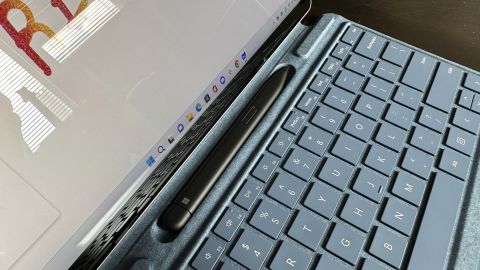
The Surface Pro 9 ships with Windows 11, Microsoft’s recently released operating system that brings a much-needed visual refresh to Windows alongside a wealth of useful multitasking and general quality of life improvements. The problem is, it’s very much designed for a mouse and keyboard, making the Pro 9 not so great as a standalone tablet
There’s no dedicated tablet mode like there was in Windows 10, meaning you’re forced to navigate the software’s relatively tiny icons and menus by hand to get anything done. It simply feels like a laptop touchscreen without the keyboard, and a far cry from the intuitive, touch-friendly navigation you’ll get on something like the iPad Pro. The Surface Pro 9 really comes to life when you have the excellent Signature Keyboard attached — and has the best pen experience out there when you pair a Slim Pen 2 — but the whole thing can seem like an expensive brick if you choose not to spend the extra $280 or so you’ll need to turn it into a real computer.
| Display |
13-inch, 2880 x 1920 PixelSense display |
13.4-inch 1200p display (touch optional) |
12.9-inch, 2732 x 2048 Liquid Retina XDR display |
|---|---|---|---|
| Processor |
12th Gen Intel Core i5 / i7 or Microsoft SQ3 |
12th Gen Intel Core i5 / i7 |
Apple M2 |
| Memory |
8GB / 16GB |
8GB / 16GB / 32GB |
8GB / 16GB |
| Storage |
128GB / 256GB / 512GB |
512GB / 1TB SSD |
128GB / 256GB / 512GB / 1TB / 2TB |
| Cameras |
1080p webcam, 10-megapixel rear camera |
720p webcam |
12 megapixel ultrawide camera (front); 12 megapixel wide, 10 megapixel ultrawide, ProRes support (rear) |
| Ports |
Thunderbolt 4 USB-C (2), Surface Connect |
Thunderbolt 4 USB-C (2), USB-C to USB-A adapter included |
Thunderbolt 4 USB-C (1) |
| Dimensions |
11.3 x 8.2 x 0.37 inches, 1.94 pounds |
11.63 x 7.86 x 0.55 inches, 2.59 pounds |
11.04 x 8.46 x 0.25 inches, 1.5 pounds |
| Colors |
Sapphire, Forrest, Silver, Graphite |
Umber, Sky |
Space Gray, Silver |
| Price |
$1,000 |
$1,000 |
$1,099 |
The Surface Pro 9 is a great 2-in-1 laptop, particularly if you’re getting your first Surface or upgrading from a Pro 7 or older — but only if you pick the right model. Unless you absolutely need constant 5G connectivity or can live with middling performance in exchange for battery life, I’d point the vast majority of people to the Intel version. It starts at a cheaper $1,000, and should offer speeds that are at the very least slightly better than the much pricier $1,300 5G version. That price gap is especially significant considering you’ll need to pay an extra $280 for the keyboard and pen necessary to truly get the most out of this machine.
If you just want a great Windows laptop, the Dell XPS 13 (starting at $1,000) gives you more for the money without the need to splurge for additional accessories. And if you’re primarily after a powerful tablet that can make for a decent laptop replacement, the iPad Pro (starting at $800) is unrivaled in terms of performance. I’d also strongly recommend considering last year’s largely similar and often discounted Surface Pro 8 (starting at $800), which isn’t quite as fast but has the benefit of a headphone jack. But for everyone else willing to pay up for the best detachable Windows laptop around — particularly for drawing and sketching — the Surface Pro 9 is as good as it gets. If you configure it properly, of course.






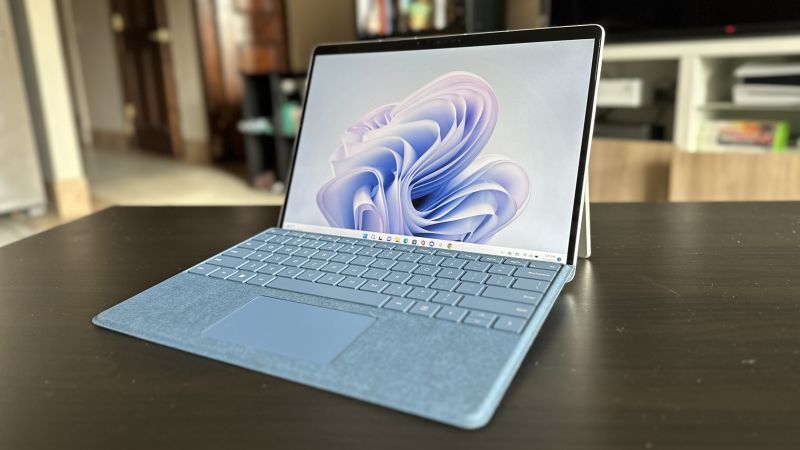

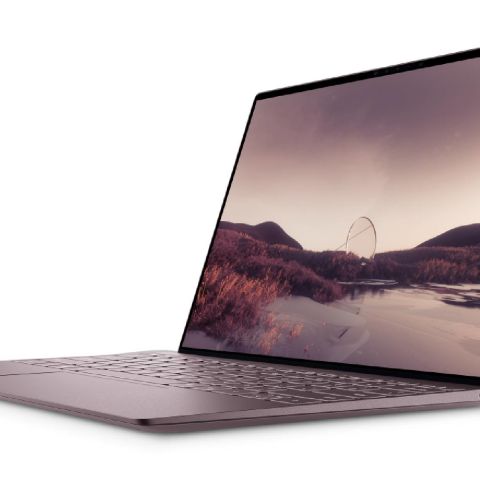
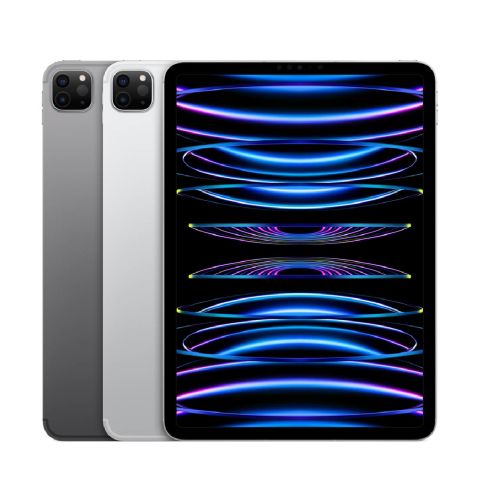
More News
Donald M. Payne Jr., Five-Term New Jersey Representative, Dies at 65
Could Eating Less Help You Live Longer?
F.D.A. Approves Antibiotic for Increasingly Hard-to-Treat Urinary Tract Infections